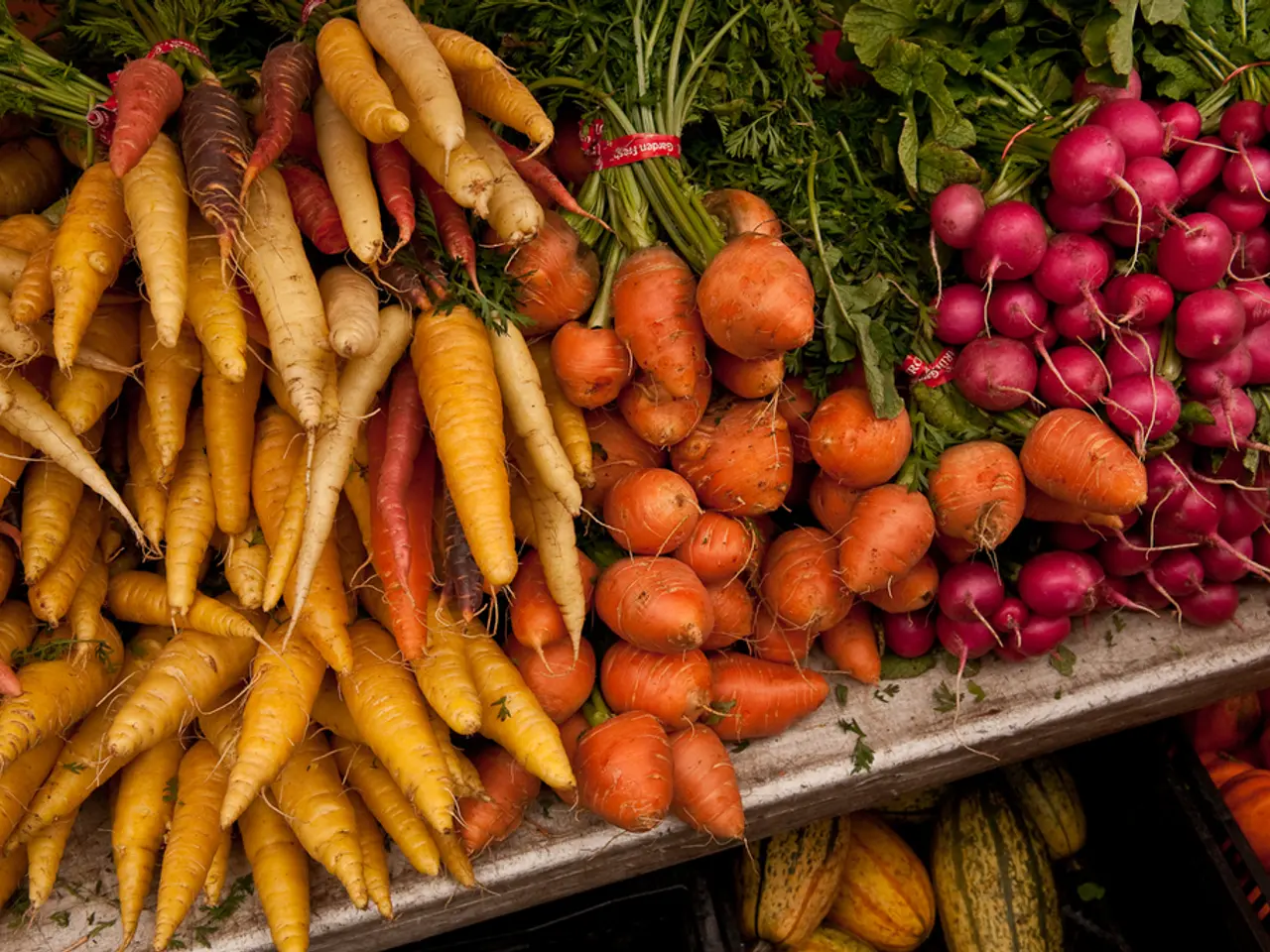Harvesting a Continuous Summer Feast through Successive Planting Techniques
======================================================================
In the heart of summer, keeping a garden flourishing with fresh produce can seem like a daunting task. But with the right strategies, you can maintain a near-continuous harvest from quick-maturing crops like lettuce, radishes, and herbs. Succession planting, a technique that involves staggering plantings every 1-2 weeks, direct sowing seeds, and timing plantings to match your local growing season and soil conditions, is a game-changer.
Firstly, staggering plantings is crucial. Instead of sowing all seeds at once, opt for regular sowing intervals. For instance, radishes, which can mature in about 24 days, can be planted every two weeks to ensure a constant harvest. This way, you'll always have fresh produce at your fingertips, from early summer right through to fall.
Direct seeding is another key principle. Many quick crops like radishes and spinach germinate best when direct seeded in the soil rather than started indoors and transplanted. Lettuce can be started indoors or direct seeded, but regular sowing intervals are important.
Harvest timing and soil preparation are equally important. Before planting the next succession crop, harvest the previous crop promptly and assess the soil condition (nutrients, pH, compaction). Succession planting should ideally occur within a week of harvesting to minimize weed growth and keep soil covered.
Late summer is the perfect time to transition from warm-season crops to cooler-season quick-maturing varieties that can mature before the first frost, extending the garden’s productivity into fall.
Companion planting and crop rotation, though more relevant for long-term garden health, can also support successive plantings. Rotating crop families and planting compatible companions can improve yield and reduce pests. Maintaining a garden journal helps track planting and harvest dates to optimize timing and succession intervals in future seasons.
By following these succession planting principles—timed staggered sowings, direct seeding when possible, quick turnaround between crops, and attention to soil and season—you can transform your garden into an unstoppable, never-ending food factory that produces enough to feed an army. Small urban gardens can yield up to 10 times more produce per square foot using succession planting techniques.
Remember, pest-resistant varieties can naturally deter pests, and when facing unpredictable weather, prioritize climate adaptability in your planting schedule. Crop rotation strategies help prevent pest buildup and nutrient depletion, while mulching helps retain soil moisture and prevent stress. Regular pest control measures like organic sprays help keep pests in check, and proper watering techniques are essential to prevent root rot and underwatering stress.
Harvesting fresh veggies every week, never facing a dull moment in the garden, and turning your backyard into a summer paradise that's more bountiful than a farmer's market on steroids—that's the magic of succession planting. Happy gardening!
Engage in succession planting by sowing seeds like radishes every two weeks for a constant supply of fresh produce throughout the growing season, including late summer and fall. Maintain your home-and-garden by direct seeding much of your produce, including radishes and spinach, and don't forget to replant lettuce regularly to make the most of quick-maturing crops and the overall success of your garden's lifestyle.




